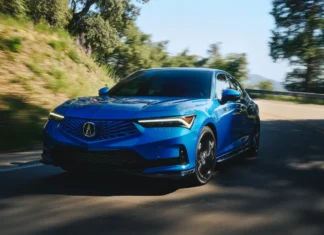
The automaker announced the move as a transformation toward a “sustainable mobility tech company”.
Stellantis signaled its shift toward business growth through software services Tuesday, with the goal of generating up to 20 billion euros ($22.6 billion) in revenue by the end of this decade. This builds out upon a large-scale electrification plan the manufacturer launched at its EV Day this summer, where it set a goal to turnover 70% of its sales to electric models in Europe and 40% in the United States by 2030.
“Our electrification and software strategies will support the shift to become a sustainable mobility tech company to lead the pack,” says CEO Carlos Tavares. “With the three all-new AI-powered technology platforms to arrive in 2024, deploys across the four STLA vehicle platforms, we will leverage the speed and agility associated with the decoupling of hardware and software cycles.” To make this targeted transformation happen, the company states it plans to invest 30 billion euros ($33.8 billion) by 2025, and expand its software engineering team from 1,000 people to 4,500 globally over the coming years.
As with several other industries, Stellantis is shifting focus toward subscription-based features over a one-time purchase to drive revenue as core pillars of its business. By 2030, the company hopes, it will roll out this functionality into 34 million vehicles across its 14 brands.
Three new platforms offering greater autonomous capability and customization
Starting in 2024, Stellantis will deploy the new platforms into its next-gen vehicles: STLA Brain, STLA SmartCockpit and STLA AutoDrive. The company plans to use partnerships with Foxconn, Waymo and BMW to hit upon over-the-air update capability, user customization inside its vehicles and up to Level 3 autonomous driving capability, all powered by AI.
This investor presentation lays out a roadmap, but exactly what the landscape will look like for these services as an end customer remains to be seen. These features could appear on a configurator page in the same manner as “hardware” options do today, or we could (likely) see vehicles with certain features enabled or disabled based on which subscriptions each particular owner wants to use.
Continuing the theme and “leveraging its data collection capabilities”, Stellantis says, it will also offer a usage-based insurance program next year through its captive in-house financing arm in Europe and North America.
We still have a bit of a wait in store, so in the meantime check out our latest Jeep outing in the video below:























